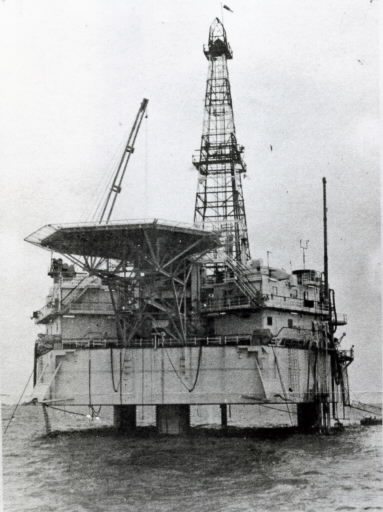2. Radiation Leakage from Cracks in the Coral
Feb. 15, 2013
Chapter 3: The Central, South Pacific and Australia
Part 3: The French Cover-up in Polynesia
Part 3: The French Cover-up in Polynesia
The end of atmospheric testing did not mean, unfortunately, that Polynesia was no longer threatened by radiation. In 1988, the issue of radioactive contamination came once again to the fore, when allegations were made that radioactive material was leaking out from cracks in the atoll resulting from underground explosions.
The problems caused by underground testing were brought to the attention of the government by a document known as the Cousteau Report. In 1987, the French government had commissioned the famous marine biologist Jacques Cousteau to investigate the geological stability of Moruroa Atoll's coral base. Cousteau and his crew stayed in the Moruroa area for five days, witnessing a test and then diving down to a depth of over six hundred feet in a submarine to investigate the condition of the coral. The result of these investigations was the discovery of a series of cracks running through the wall of the atoll.
The report indicated that there was danger of radiation leakage from these fissures, and recommended that the three-thousand-foot hole bored for use in the tests be filled with concrete.
We spoke to Fillippe Siu, a marine biologist, about the report. Siu holds the title of technical adviser to the minister of health and environment of the Territorial Assembly, and is also the leader of Tahiti's antinuclear party, Power To The People. He told us excitedly: "It was common knowledge here that marine life was in danger of becoming contaminated by radioactive material leaking from cracks in the coral, but the Cousteau Report was a landmark, the first official proof of what we had known for years." The coral reef, which makes up the structure of the atoll, is constructed of limestone and consequently is not very resistant to the shock of a nuclear explosion. The actual point of the explosion is three thousand feet underground in a layer of basalt, which is also fragile, making the atoll a geologically unsuitable site for nuclear testing.
The problem lies not only with the geology of the area. The islands are only six to ten feet above sea level at the most, and do not have a very large area. A number of accidents are known to have occurred which may be blamed, at least partly, on these topographical limitations.
In July 1979, six workmen were injured in a tidal wave caused by an underground test carried out at a shallower point than usual. Radiation leakage was also suspected.
In August 1979, according to French workmen, plutonium leaked from the laboratory into the reef. The area was covered in asphalt.
In March 1981, a cyclone caused a stack of radioactive waste to be washed away; over forty pounds of plutonium were scattered in the sea.
Plutonium is an extremely radioactive material. Yet there was no explanation as to why no action was taken to minimize its dispersal into the sea. There are also reports of subsidence caused by testing. The Polynesian council has requested on a number of occasions in the past that independent doctors and scientists be permitted to investigate contamination and land stability in the area. The French government, however, has persisted in covering up the truth by whatever means available.
For example, in 1982, seismologists chosen by the French authorities were sent to investigate the situation at Moruroa. However, they spent only two days on the atoll, and the nuclear test which they witnessed was on a much smaller scale than usual: one kiloton rather than the usual amount of between ten and seventy kilotons was detonated. In October 1983, a party of New Zealand scientists was reluctantly allowed into the test area, but they were refused information regarding radiation leakage and were forced to collect samples under French supervision. Needless to say, neither of these investigations was able to uncover any problems caused by the testing.
The Cousteau Report was different, however. The French government was forced to admit that the foundations of the atoll were damaged and that the danger of radiation leakage existed. There is no doubt that the cracks found by Cousteau in the coral of Moruroa have served to strengthen the argument for a complete ban on testing.








